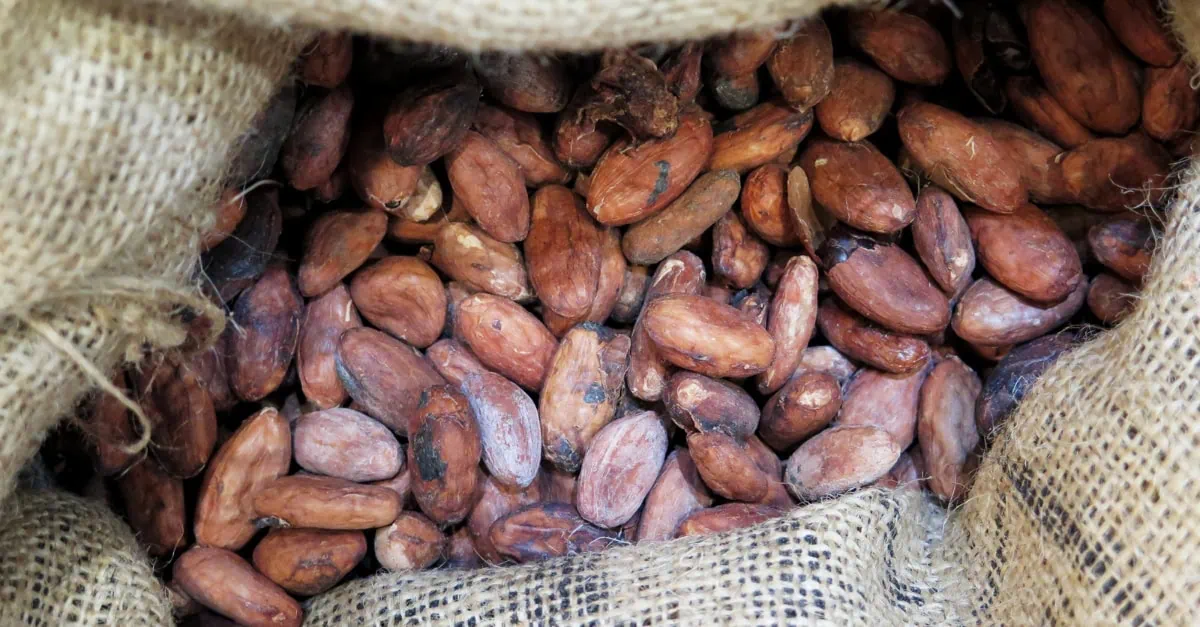Ivory Coast has reduced its cocoa export contract sales for the upcoming main crop season by 100,000 metric tonnes, cutting forecasts from 1.3 million mt to 1.2 million mt as severe drought conditions threaten production in the world’s largest cocoa-producing nation.
The downward revision by the country’s Coffee and Cocoa Council (CCC) follows poor weather conditions ahead of the 2025/26 season, which begins October 1st. Drought and swollen shoot disease have driven higher pod mortality between July and August, a crucial period for determining the size of the next cocoa crop.
Severe drought hits at critical time
The timing of the weather challenges couldn’t be worse for global cocoa markets. The 30-day period through August 15th marked the driest conditions for this time of year in 46 years, according to meteorologist Joe Woznicki at Commodity Weather Group.
“While rainfall typically eases seasonally at this time, the magnitude this year is notable and could impact the retention of cocoa pods on trees before the autumn harvest,” Woznicki explained.
The lack of rainfall has coincided with the peak development phase for cocoa pods, making the next three months especially critical for crop development. Farmers across Ivory Coast’s cocoa-growing regions are reporting visible stress on their plantations.
“The absence of heavy rain continues,” said Modeste Zadi, a farmer in Buyo in the southwest. “Leaves are falling off some trees and some cherrelles, or young pods, have turned black or yellow. We’re still hoping for a return of the rains before the end of the month.”
Quality concerns compound supply issues
Beyond quantity concerns, the drought is also impacting cocoa quality. Ivory Coast’s cocoa grind dropped 31.2% year-on-year in July to 39,301 mt, with grinders citing poor bean quality and low volumes from the mid-crop harvest.
“July’s grinding has fallen dramatically this year compared to last year, mainly due to the quality of the beans,” explained the director of an international grinding company based in San Pedro. “They are mediocre this year, so we are rejecting a large quantity due to a lack of fat and a high acidity level.”
The quality issues have left grinders with depleted stocks heading into the new season. Between April 1st and August 17th, cocoa bean arrivals at Ivory Coast’s main ports reached only 350,000 mt—down 30% from around 500,000 mt during the same period last year.
Cocoa prices decline despite supply concerns
Despite the production challenges in Ivory Coast, cocoa prices have continued their recent decline. London cocoa futures for December delivery dropped GBP 231 or 4.2% versus August 15th, while New York December cocoa futures decreased USD 497 or 6% over the same period.
Over the past two weeks, cocoa prices have shown continued weakness with London futures down GBP 95 or 1.8% and New York futures declining USD 197 or 2.5%. The annual time spread between December 2025 and December 2026 contracts has also narrowed, decreasing to GBP 327 in London and USD 747 in New York.
The decline in cocoa prices comes as the market waits for confirmation of crop conditions and whether chocolate demand has stabilized after significant volume declines.
Recent Nielsen data shows European chocolate confectionery volumes declined 19.43% in the four-week period ending July 13th, even as average prices increased 20.2%. This indicates consumers are still adjusting to higher chocolate prices stemming from the cocoa supply crisis.
The CCC’s decision to reduce export contract sales represents a cautious approach to avoid delivery defaults. “This adjustment will allow us to avoid any defaults,” a CCC official confirmed to Reuters.
Looking ahead
Weather forecasters suggest wetter conditions may be possible in central and northern parts of Ivory Coast through the end of August. However, drier conditions are expected to persist in the country’s south and extend across other West African cocoa-producing regions including Ghana, Nigeria, and Cameroon.
The CCC has already sold 950,000 mt of cocoa for the 2025/26 season and has only 250,000 mt remaining to sell by the end of September. Under the council’s marketing model, between 70% and 80% of the forecast harvest must be pre-sold to determine the guaranteed farmgate price for the coming season.
For chocolate manufacturers and ingredient buyers, the developments in Ivory Coast signal continued supply tightness in global cocoa markets. The combination of reduced export availability and quality concerns suggests procurement strategies may need adjustment as the new crop season approaches.
As one export company director in Abidjan warned: “We are preparing for a difficult campaign because the intermediary crop is not good, which means no carryover stocks, or at best very poor-quality beans that will be hard to blend.”
This article is part of a full cocoa market analysis. For the full market analysis, visit: https://app.vespertool.com/market-analysis/2218?commodity=cocoa
